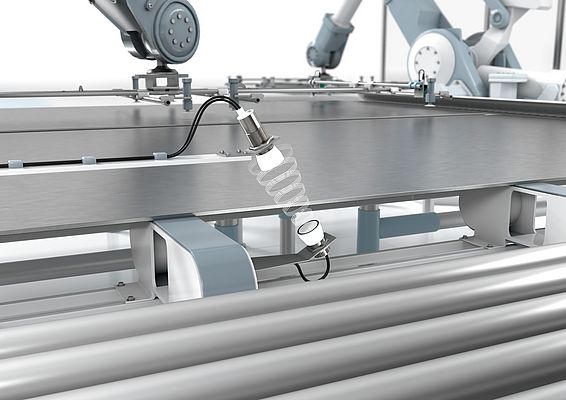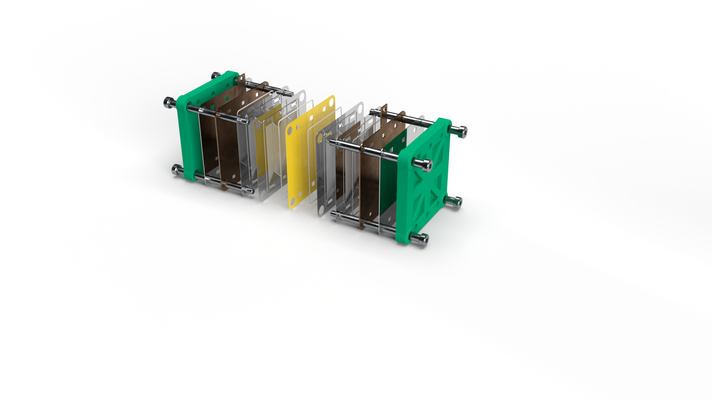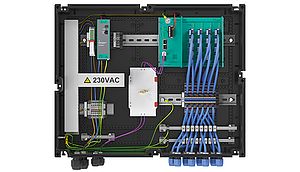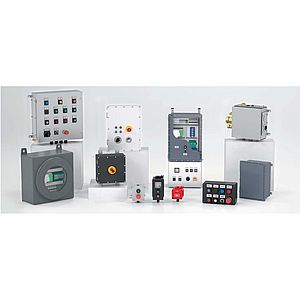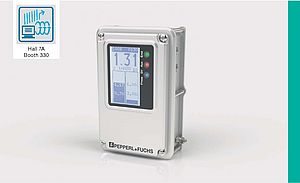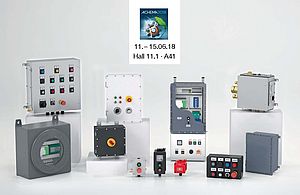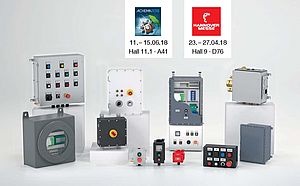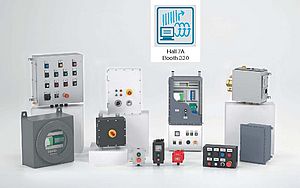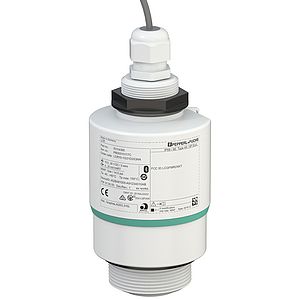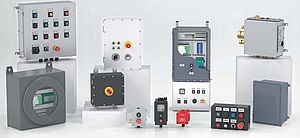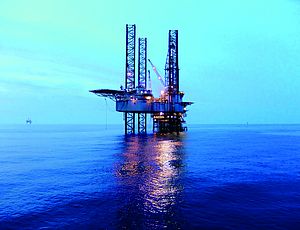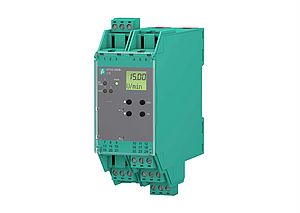For these reasons, fossil fuels such as oil, gas, and coal have been the energy carriers of choice—until now. Contrary to past predictions, they are still widely available, inexpensive, and versatile. These fossil fuels have not just been used for energy generation—they are also used as raw materials for chemicals, pharmaceuticals, and many other products.
Over the past 20 years, two "renewable energies" have become the forerunners in terms of generating electrical energy. Disregarding the fact that energy is not technically "renewable," wind and solar energy are the first candidates to come to mind here—as energy carriers that appear to be free of charge. In fact, there have been astonishing developments in this area over the past two decades, both in terms of scale and cost.
Have all problems with these technologies now been solved? Not at all: There are still fundamental problems that have unfortunately been negligently underestimated over a long period of time. Germany is one country in the world with a reliable supply of electrical energy at all times. This is not necessarily a matter of course, even in highly developed countries. The supply system was designed to always cover absolute maximum demand, even if this is only incurred for one hour a year. Energy generation therefore depends on demand—not only in terms of time, but also space. That is why it made sense to build large power plants near large energy consumers. These may be highly populous cities or heavy industry facilities, for example.
Using solar and wind power as energy sources does not meet these requirements. The position of wind turbines depends on the available space and the "wind supply." In turn, installing PV modules depends heavily on the willingness of private individuals to invest. The supply of energy from these systems also depends on weather conditions.
Germany has been afforded the luxury of having two energy supplies for years to compensate for the problems described above. Even though current figures indicate that we are generating 46 % of our electricity from renewable sources, on certain days of the year it is barely more than 20 %. The fewer conventional power plants we have, the more likely it is that we are heading toward an uncontrollable situation.
We therefore need to find a balance between supply and demand, not only in the short term, but also seasonally. It goes without saying that more energy is needed in winter than in summer. This means that a medium is required that can store energy over any period of time, is easily transportable, and can be used for various applications, including for reconversion.
If we look at Germany as an example, however, only around 20 % of the country's total energy requirements are met by electricity: The far greater share is therefore actually supplied using oil, gas, and coal. This includes the entire transport sector, heating market, and industry, especially sectors such as steel, chemicals, cement, and glass. It's easy to sit and philosophize about the extent to which these industries can be "electrified," but only time will tell—it will very much depend on cost and availability.
The trump card in this game is hydrogen. There is currently unanimous agreement about this across the world. As a storage medium, it can compensate for the erratic fluctuations in wind and solar energy, and its known derivatives can replace fossil fuels in all applications as a raw material. How exactly this can be implemented in practice goes beyond the scope of this article. However, the fact is that gigantic amounts of "green" hydrogen are now required. "Green" hydrogen is produced by electrolysis, which involves running an electric current through water. The water is split into hydrogen and oxygen. This process takes place in an electrolyzer: It can then be reversed in a fuel cell. In this case, the hydrogen serves as the fuel and combines with oxygen to generate energy. The "waste product" is water.
As a raw material, water is available on our planet in almost limitless amounts in the oceans. However, electricity must be generated. If this process can be completed in a climate-neutral manner, it will be possible to convert our energy supply so that CO2 generation and absorption is brought back into balance, preventing the continual warming of the atmosphere.
The use of hydrogen and its derivatives will therefore depend on availability and price in the near future. There are two major factors influencing the production process: the price of electricity and the cost of purchasing plants. Although they use very similar technology, electrolyzers and fuel cells play in different leagues. Electrolyzers have a unique selling point in the production of green hydrogen, while fuel cells compete with other processes. In heavy goods transport, for example, hydrogen drives compete with battery-powered electric motors.
Nevertheless, the aim in both cases is to significantly increase the number of production units to meet massively growing demand and sustainably reduce costs. A key factor here is therefore industrializing production process, i.e., using automation. The core components are the bipolar plates (BPP) and the membrane electrode assembly (MEA). In terms of the latter, a distinction is made between 3-, 5-, and 7-layer MEAs. In this case, catalyst layers are applied that are required for the electrolytic processes.
The Fraunhofer Institute for Machine Tools and Forming Technology IWU in Chemnitz is currently launching the "Reference-Factory.H2" project, the aim of which is to optimize the production of these components. The project will test, investigate, and optimize all processes, from the production of bipolar plates and the functionality of seals through to the assembly of the complete stack.
Initial practical applications have shown that checking for potential double layers may be a criterion. Ultrasonic sensor technology has proven itself as effective in this application. In principle, these sensors can accurately measure distances to a tenth of a millimeter and detect multiple layers or even cracks. One particular benefit of ultrasonic technology is that it works irrespective of the object's material composition; therefore, properties like color, luster, and transparency will have no effect. This offers great advantages, especially for metallic and translucent materials.
Sensors of the Pepperl+Fuchs F77 series can deliver height measurements that are accurate within 0.2 mm. Pepperl+Fuchs UDC double sheet controls can detect multiple layers by detecting boundary layers, i.e., the last layer before an air gap. Last but not least, the supplied components can simply be checked for their presence or position.
These modern sensors have a standardized IO-Link interface that can be used to adjust settings and query status data. The interface modules (masters) that are also available transfer the data via OPC UA to other units of the IT infrastructure. This means that all the prerequisites for an architecture in accordance with Industry 4.0 are met.
Author: Wolfgang Weber, Pepperl+Fuchs




